#juan bosch
Explore tagged Tumblr posts
Text
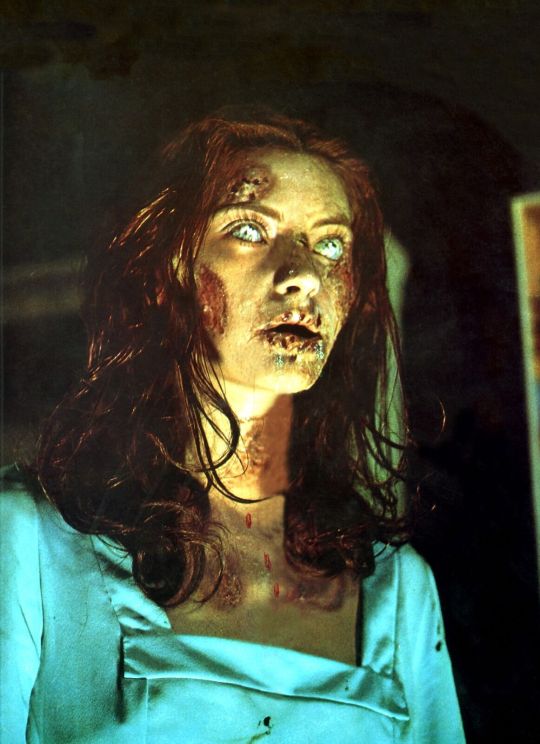
Mercedes Molina in Exorcismo (1975)
184 notes
·
View notes
Text
La mancha indeleble de Juan Bosch, no es un Osorio de granos de café en Wamba (1307)

fuente: Osario de Wamba: así es el lugar más macabro de España – Mil y un viajes por el mundo
Escuche atentamente...
youtube
enlace https://youtu.be/7taLbhBoP3o La Mancha Indeleble - Juan Bosch iIlustrado usando IA - Midjourney
youtube
enlace https://youtu.be/BGugnwpKD9k La Mancha Indeleble-cortometraje-2009
Explicación del cuento La mancha indeleble
Juan Bosch (República Dominicana, 1909 - 2001) fue un autor que intentó representar la realidad de América Latina a través de la exuberancia del paisaje y la crítica social.
El escritor fue un gran opositor al régimen dictatorial de Trujillo y participó activamente en la política, ya que creó un partido y fue presidente de su país durante algunos meses.
En este cuento se refiere a la situación política de aquellos años. A través de la fantasía y la ironía, juzga a los partidos que pretenden una obediencia ciega de parte de sus afiliados.
El nombre del relato alude al hecho de quedar "marcado" para siempre por tener ideas que se inclinan hacia un lado u otro, impidiendo ejercer la libertad democrática. Los 20 mejores cuentos latinoamericanos explicados - Cultura Genial
youtube
enlace https://youtu.be/KzFjQCsn7po

Aunque Juan Bosch obviamente no se refería a un Osorio, la imagen me surgió al oír el cuento, la del Osorio de Wamba, Valladolid, cerca de la cuidad de Valladolid, España, donde vivo desde 1983. Pero escuché y lea el siguiente articulo que explica lo que es un Osorio y en particular habla del Osorio de Wamba a la que he visitado.
youtube
enlace https://youtu.be/htzGkyY-WFo
enlace https://ok.ru/video/8920476355123 fuente:
El articulo que pasamos a continuación con la fachada anterior, cada paso es 5 segundos. En estos 5 segundos podrás retener el paso para apreciar y leer el texto sin agobios.
fuente: ¿Conoces alguno de los osarios más impresionantes del mundo? - Viajar
#1307#literatura#la mancha indeleble#juan bosch#republica dominicana#osorio#wamba#valladolid#español#2025-01-23
7 notes
·
View notes
Text

exorcismo (1975)
4 notes
·
View notes
Text
Mirada historiográfica de las definiciones e historia de la región del Caribe en algunos historiadores de los siglos XX y XXI
Menos Adictas al Estudio de la Cartografía, las Generaciones Siguientes entendieron que ese dilatado Mapa era Inútil y no sin Impiedad lo entregaron a las Inclemencias del Sol y los Inviernos. —Jorge Luis Borges, Del rigor en la ciencia Introducción Lo cíclico y lo desconocido se ha simbolizado en la antigüedad como el mar. Ese tipo de imaginario es difícil de erradicar y permea inclusive en…

View On WordPress
#Antonio Gaztambide#atención#Caribe#conflicto#Eric Williams#funcionalismo#haití#historia#historia del caribe#Juan Bosch#marco teórico#materialismo histórico#Moya Pons#Pedro L. San Miguel#Pierre-Charles#positivismo#puerto rico#repúbica dominicana#Rogozinski#sociología#teoría de conflicto#teoría funcionalista
0 notes
Text
EXORCISM (1975) Reviews of Paul Naschy Exorcist rip-off
‘A theme that has thrilled audiences all over the world, now terrifyingly set forth:’ Exorcism is a 1975 Spanish horror film directed by Juan Bosch [as Joan Bosch] (Bloody Sect; The Killer Wore Gloves) from a screenplay co-written with Jordi Gigó [as Georges Gigo] (Devil’s Kiss) and Jacinto Molina. The latter stars, using his screen name, Paul Naschy, alongside Maria Perschy (The Blue Eyes of the…
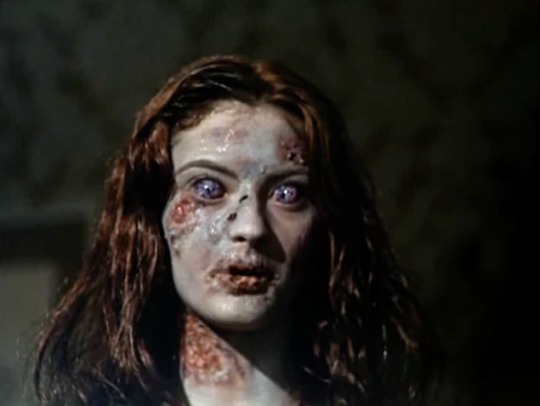
View On WordPress
#1975#exorcism#Exorcismo#film#horror#Juan Bosch#María Kosty#Maria Perschy#movie#Paul Naschy#review#reviews#Spanish#trailer
1 note
·
View note
Text
youtube
Jorge Salas and Natasha Tia dance salsa at Denver Salsa Bachata Congress 2023.
Song: Juan Formell y Los Van Van ft. Jimmy Bosch "Sandunguera"
Video Credit: Star Mambo Video
#jorge salas#natasha tia#salsa dancing#denver salsa bachata congress#los van van#juan formell#social dancing#denver#colorado#star mambo video#jimmy bosch#video#2023#Youtube
1 note
·
View note
Text
Eternity by your side ❤️
This took way longer than I expected but I'm just soooo happy with the result 🥰🥰
The paintings/photographies I've used as background in chronological order below the cut!
'Pillars of Creation (NIRCam Compass Image' taken by the James Webb Space Telescope
'The Garden of Earthly Delights' by Hieronymus Bosch
'Noah's Ark' by Edward Hicks
'When the Morning Stars Sang Together' by William Blake
'Cristo de San Juan de la Cruz' by Salvador Dalí
'Roman fresco with banquet scene from Casa del Casti Amanti (IX 12, 6-8) in Pompeii'
'King Arthur' by Charles Ernest Butler
'London from Southwark' (painter unknown)
'La liberté guidant le peuple' by Eugène Delacroix
'The Cemetery Entrance' by Caspar David Friedrich
'London: The Old Horse Guards from St James's Park' by Canaletto
'St Paul's from Cannon Street' by Ernest Boye Uden
'Piccadilly Circus' by L. S. Lowry
'London, Sun Breaking Through the Fog' by Claude Monet
#my art#art#fanart#good omens#art video#crowley x aziraphale#aziraphale#crowley#ineffable husbands#ineffable partners#ineffable spouses#good omens spoilers
209 notes
·
View notes
Text
60 Sec Rec: Halt and Catch Fire
I'm going to borrow from a Vox article for the summary and a reason to watch:
"[...] originally set up the series as a conventional antihero drama about the sneering, self-proclaimed genius Joe Macmillan, who hijacks a small Texas computer manufacturer in the early 1980s and tries to get it to build his dream machine. He’s joined in this by two computer whizzes who can do the work while Joe offers the Steve Jobs-style bravado — Gordon Clark and Cameron Howe. These early episodes struggled to stand out from the glut of other antihero dramas rattling around in the 2010s. Yet they’re also necessary for setting up the series’ larger idea, which is that Joe might think he’s a genius, but the thing he really needs is to be tempered and improved by the people around him." [Vox]
"It also absolutely nails a tone that’s tricky to manage: optimism, tempered with a sense of how hard it is to accomplish anything with real meaning in this world." [Vox]
This show is a stand-out for the way it focuses on its characters and their relationships. Very rarely have I seen a show that lets all its protagonists be brilliant, and assholes, and sad, and flawed, much less one that lets them not just evolve but change their dynamics. Their arguments make sense, you can see why they're drawn to each other and also why they fight.
It has some scenes that will have you teary-eyed even if you're not a crier, because they're just so... they feel so real, so true.
Created by Christopher Cantwell and Christipher C. Rogers (Paper Girls, Lodge 49). Written by the showrunners, plus Jamie Pachino (Chicago PD, Fairly Legal), Zack Whedon (Southland, Fringe), Jason Cahill (Fringe, The Sopranos), Mark Lafferty (White Collar). Directed by Juan José Campanella (Law & Order SVU), Karyn Kusama (In Treatment, Yellowjackets), Daisy von Scherler Mayer (Yellowjackets, Bosch). Starring Lee Pace, Scoot McNairy, Kerry Bishé, Mackenzie Davis, Toby Huss, Annabeth Gish, ... Kathryn Newton (10 eps).





Previous: Deadloch - Dead Boy Detectives - The Tick - This Close - Kung Fu - Nancy Drew - Kevin Can Fuck Himself - Silo - The Flight Attendant - Severance - Hacks - Hit The Floor - Black Sails - 12 Monkeys - T@gged - The Diplomat - The Mick - Timeless - UnReal - Kings - All Rise - Barry
7 notes
·
View notes
Text
Nightmare Fuel Art Master-post, Vol. I
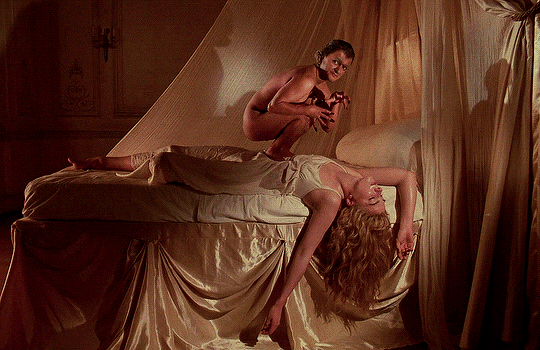
Regularly updated!
15th Century
Gerard David Hans Holbein Hans Memling Hieronymous Bosch Lucas Cranach the Elder Matthias Grunewald Titian
16th Century
Adriaen van de Venne Artemisia Gentileschi Filippo Napoletano Hans Baldung Grien Herri Met de Bles Jacopo Ligozzi Jan Mandijn Jan Massys Pieter Bruegel the Elder
17th Century
Caravaggio Francesco Furini Frans Francken II Juan de Valdes Leal Jusepe de Ribera Leonaert Bramer Peter Paul Rubens Salvator Rosa 18th Century
Edvard Munch Francisco de Goya Henry Fuseli J.M.W. Turner Karl Alexander Wilke Katsushika Hokusai Paolo Vincenzo Bonomini William Blake
19th Century
Amedee-Ernest Lynen Antoine Wiertz Armand Rassenfosse Arnold Bocklin Carlos Schwabe Edmond Louis Dupain Felicien Rops Francesco Scaramuzza Franz von Stuck Georges Rochegrosse George Frederic Watts Gustave Dore Gustave Moreau Henri Regnault Ilya Repin Jakub Schikaneder James Tissot Jean Francois Millet Jean Leon Gerome Jean Paul Laurens Jean Veber Jeno Gyarfas Jose Casado del Alisal Laszlo Mednyanszky Louis Gallait Maximilian Pirner Odilon Redon Paul Burck Theodore Gericault Theodor Kittelsen Theophile Schuler Tsukioka Yoshitoshi Wilhelm Kotarbinski William Holbrook Beard Witold Wojtkiewicz
“Turn of the Century” Alberto Martini Alfred Kubin Antonio Rizzi Egon Schiele Frantisek Kupka Fritz Gareis Georges Desvallieres Harry Clarke Heinrich Kley Henryk Weyssenhoff James Ensor Jaroslav Panuska Jean Delville Josef Mandl Julien Adolphe-Duvocelle Kathe Kollwitz Manuel Orazi Marian Wawrzeniecki Oscar Parviainen Piotr Stachiewicz Richard Tennant Cooper Sascha Schneider Sergius Hruby Wladyslaw Podkowinski Vasily Vereshchagin
43 notes
·
View notes
Text

Exorcismo (1975) Italian Poster
58 notes
·
View notes
Text
LA MUJER un CUENTO de JUAN BOSCH

Existen varias cortometrajes sobre este cuento LA MUJER de Juan Bosch que les presentare, pero lo mas significativo para mi es el cuenta en si. En la primera parte del blog la inicio con el cuento en en formato de audio-libro, que considero debe ser la base y el punto de arranque de este corto cuento para tener una apreciación de la dialéctica de Juan Bosch y como gráficamente los demás interpretan su cuento.

A continuación podran leer el cuento de Juan Bosch en el siguiente enlace: Cervantes@MileHighCity: LA MUJER Juan Bosch (cervantesmilehighcity.com)

A continuación les hago un breve comentario sobre mi persona y mi afinidad con Juan Bosch. Yo comencé en la política involucrándome con el Partido de Liberación Dominicana (PLD) desde su inicio cuando Juan Bosch se separó del Partido Revolutionary Dominicano (PRD), ambos partidos formado por Juan Bosch. Fui proselitista del PLD en Bonao (Bonao es un pueblo del Cibao a unos 80 kilómetros de la Capital de Santo Domingo) formando un circulo de estudio en sus inicios. Pronto el PLD comenzó adquirir gran momentum, especialmente por la disciplina, trabajo y esfuerzos de sus lideres en aquel entonces que nos toco abrir paso. Digo esto para que mis lectores sepan donde descansa mi corazón y mi coraje y porque yo promulgo el ideario de Juan Bosch a través de sus obras que permanecen vivas aun.
youtube
(716VID1 AUDIO) https://youtu.be/Jh0rsoW_oD0
Cada narrador tiene su voz que le da vida al cuento. Ese timbre de la voz abre la puerta de la imaginación. La entonación de esa voz que lee el cuenta es la nos hace soñar. De la letra a la voz a la imagen...
youtube
(716VID2) https://youtu.be/yE6RrTvJ4eU
Os presento varios voces por distintos narradores. Varios cortometrajes realizados por distintas visiones, cada uno distinto en sus escenarios y en su forma de vocalizar...
youtube
(716VID3 AUDIO) https://youtu.be/ZXXQ_APX6sY
Encuentro fascinante como los narradores así como realizadores interpretan la misma obra con distintos matices que hace de ellos unicos, siendo la misma obra la oímos en distintas ondas y la vemos con distintos colores.
youtube
(716VID4) https://youtu.be/_nzoVexKeYo
youtube
(716VID5 AUDIO) https://youtu.be/YLP21tsPaDk
youtube
(716VID6) https://youtu.be/1O6wAnHIND4
(716VID7) https://youtu.be/7uF1HTxFI4M
youtube
(716VID8) https://youtu.be/ilCfB05JYCM
youtube
(716VID9) https://youtu.be/EQVXQs5QMQY
REF: 716
0 notes
Text

Jerónimo Bosch: San Juan Bautista en meditación
13 notes
·
View notes
Text
Exorcismo (1975)
Dir. Juan Bosch

3 notes
·
View notes
Photo


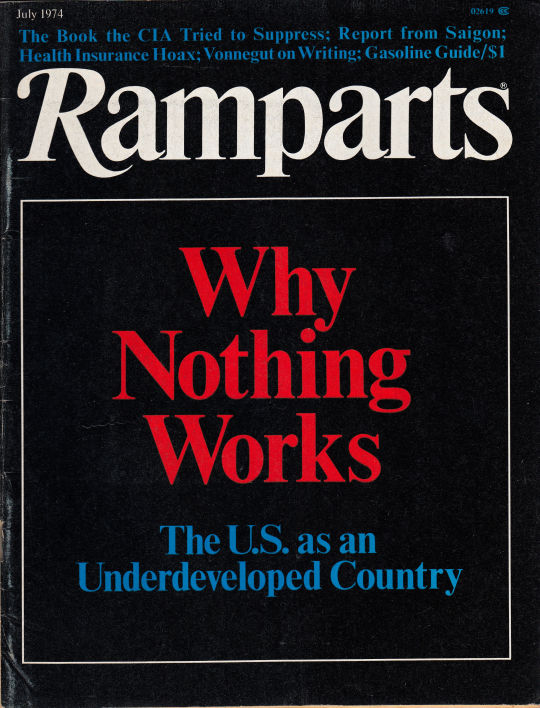



This series is about something, maybe assassination, identity, and mass politics. The previous part, Part 3, is here.
Almost nobody remembers Ramparts anymore. The 1962-1975 magazine was a mainstay on newsstands with its glossy covers and sensationalism, and yet inside was a type of investigative muckracking journalism more in common with Mother Jones or Counterpunch (both of whom it helped spawn) than the tabloids it stood with. Its story is an effusive narrative with a star-studded cast, featuring early works from virtually everybody well known on the left today as well as people famous for writing in its heyday who have fallen by the wayside. It’s really not a tale that can be told as a one paragraph pitch, because it happens to have a load of complexity. Ramparts reflected an America in transition between an old idea of multiculturalism as a progressive force to put Protestants, Catholics, and Jews onto an equal footing into a new one to negotiate whether black people and other minorities would be integrated into the management of America’s global empire, work together to overthrow it, or be mutilated by an apartheid regime in freefall. It also showcases the role of insurgency, especially symbolism, and counterinsurgency, especially intelligence, in the management of that global empire at home and abroad.
The magazine began the way many failed dreams do: a moralizing Catholic who inherited a small fortune from his parents. Real estate lawyer Edward Michael Keating had been born to a poor woman and grew up in orphanages when he was suddenly adopted by a millionaire who he’d always suspected was his biological father, too ashamed to keep him until he was too ashamed to not. He married Helen English, another millionaire whose parents died young which meant he got their money. Flush with cash and guilt, he decided he would found a left wing Catholic magazine. America was dominated by a conservative bloc of Catholics: the most powerful American Catholic was Cardinal Spellman of New York. He had agitated for an American invasion since the French defeat in 1954 and worked with the CIA to defeat Juan Bosch in the Dominican Republic in 1965. Keating was an idealist. He published Ramparts chock-full of the ramblings of every heterodox Catholic in the country (an early review compared it to a middle school girls’ poetry rag), but also with reports from prominent liberal Catholics like Thomas Merton, a hippie monk who wanted to bring Buddhist practices into the church, and John Howard Griffin, a white guy who painted himself black and toured the south as an undercover journalist. Their advocacy of black civil rights kept them from mainstream American Catholicism, but they found a voice in Keating.

This attracted left wing radicals to a magazine which had a rich donor willing to back any odd idea they’d have, who was more dedicated to exposing America’s hypocrisies than in dealing with his own. Perhaps the most important figure here was Warren Hinckle, a Catholic who got on Keating’s good side by being devil’s advocate in print to prominent Catholic figures and who brought credence by having worked for an actual newspaper, the San Francisco Chronicle. He had done a stint in Oakland and learned how the police treated black people (”the loss of a white life had more news value than the loss of a black life”). Hinckle was a hard drinker who loved thumbing his nose at every piety he could, which made him an antagonist of everything from the national intelligence establishment to good manners. However, he still attended mass weekly, the same as virtually every lapsed Catholic did in those days because the center of virtually all American social life at the time was at places of worship, something definitively not true nowadays.
Hinckle’s tactics at selling magazines were what made him permanent as the editor. When German playwright Rolf Hochhuth wrote a play criticizing Pope Pius XII’s role in the Holocaust, Keating and Hinckle both thought it was shit privately. However, Hinckle overheard famed muckracking journalist I.F. Stone’s sister Judy on the phone unable to sell an interview with Hochhuth, he convinced Keating to run it alongside a defense of the play. Moreover, Hinckle decided to promote it with a press conference at the Waldorf Astoria in New York. He phoned every newspaper and magazine in the city to promote it including Bedside Nurse, Detergent Age, Professional Barber, and the Jewish Braille Review, offering free danishes and bloody marys. When the press came and Keating began to orate, both were enthralled at the attention they received. Hinckle followed this up with a story purported to name the murderers of 3 civil rights workers in Alabama that never emerged, a story featuring graphic pictures of white police beating black men during Harlem riots, and a picture of swear words under an image of Christ. Merton cautioned the two over the sensationalism, but they continued to publish their work because it sold and got them attention.

It also got them funders. Jessica Mitford, the heir of a British lord who had joined the American Communist Party, was one of many rich left wing ideologues who liked the mag’s bent and could use some of the ad space (her own story is pretty incredible). Others were businessmen for whom the bargain bin rate outweighed the salaciousness. Hinckle’s prowess at negotiations always made it seem like he was doing the investor a favour, despite them having to sign a waiver indicating sound mind after seeing the accounting sheets. Income never came close to outweighing expenses given the predilection for expensive stunts, the need to come up with in-depth investigative journalism, or the sheer amount of expenses Hinckle and others were willing to charge. With creative accounting, however, Ramparts never had to resort to printing on cheap “butcher paper” without colour illustrations like other leftist mags until the end of the 60s.
This marked the shift away from explicit Catholicism to leftism, shifting some control out of Keating’s hands and allowing them to hire white people from other religions. Two key hires at the end of 64 and beginning of 65 were Jews. Dugald Stermer was a graphic designer with no leftist credentials to speak of. He was given control of the entire magazine’s look every month and designed most of the covers himself, and his talent became much of the reason for Ramparts’ continued success. For decades after, magazines like Rolling Stone, Mother Jones, and the Nation based their work on his. The second was Robert Scheer. A New York red diaper baby, his formative years were spent in CCNY arguing with other Jews about left wing economics. Bearded and long-haired before it was cool, his academic career was derailed by a trip to Cuba where he met with Che, killing his job at Princeton and forcing him into the ghettos of left wing journalism. Scheer’s first article with Ramparts was in January 1965, in an issue focused on the Vietnam War. Keating had managed to get the magazine an interview with his old college roommate, a senator from Idaho who had come out against the war named Frank Church (later of the Church Committee). Scheer critiqued the work of prominent Catholic supporter of the war Thomas Dooley with his own experiences, having travelled to Vietnam in 63. His article had come as a result of his girlfriend meeting Hinckle’s wife. Before he could be hired, a sitdown was necessary between Keating and Scheer. It occurred at a restaurant where the waitresses were topless. Keating, ever the moral conscience of Ramparts, did not like the experience, saying “It didn’t seem safe to serve hot food that way“. Scheer rose quickly because he was one of the few people on the staff who had foreign policy knowledge and was willing to fly to the places he discussed to do research. By October, he was “Foreign Editor”, his hands on every Vietnam War piece published. He also had other beats: in 1966, during the Reagan campaign for California governor, he was tasked with getting an in person interview. Scheer fell asleep in a chair in a hotel room waiting for him to show up, and woke to Reagan pulling up his pants, apparently not having noticed Scheer. That month, October 1966, he was “Managing Editor”.
There were other important early hires. WASP Adam Hochschild, later founder of Mother Jones Magazine and author of King Leopold’s Ghosts, was motivated by what he had seen on a stint working for an anti-apartheid publication in South Africa as well as the assassination of Patrice Lumumba. He depicted Ramparts’ offices as a madhouse. Hinckle’s pet monkey, named after the owner of Time Magazine and long-time CIA friend Henry Luce, was allowed to wander the halls freely but tended to travel in the company of its owner. One day, a television crew from a foreign country would be in filming a documentary. The next, a leftist luminary would be in toting drugs or guns, like Malcolm X’s widow Betty Shabazz, who had 12 armed bodyguards with her, or Hinckle’s protege Hunter S. Thompson, who brought a backpack filled with illicit substances that Luce promptly broke into and pilfered from. Hinckle rarely did anything without lunch at a restaurant, where he would consume a dozen scotches without showing any sign of inebriation. One of his favourites was a cop bar he’d found on his old beat, where he’d pick up tips as to what was going on in the city. Often, he’d come up with a new business plan on the fly, only to balk when he realized the cost. Scheer would press him on it, “What’s the matter? Got no guts?” Scheer disliked the cop bar since there wasn’t enough women to hit on.
Reese Erlich later won a Peabody, worked for NPR and Vice, and published books on Iraq, Syria, and Iran in the 2000s. He was part of the Oakland Seven on trial for anti-war protests. Their successful lawyer later defended Huey Newton and Jim Jones. He was hired along with his girlfriend as part-time office assistants. At one point, Hinckle told them to drive him to the airport. He pulled them into a bar despite them being underage. The bartender, knowing Hinckle, immediately set up 15 vodka screwdrivers. Hinckle drank them all and missed his flight. Erlich later had an article where he interviewed a co-defendant. The cover was a picture of Stermer’s child waving a Vietcong flag.
Ralph Gleason, a jazz reviewer at the Chronicle, was poached by Hinckle for music columns. He later met a young man named Jann Wenner at a concert and pulled him in as a rock columnist for the abortive glossy spinoff Sunday Ramparts. Wenner ended up marrying a young copy editor he’d met at the magazine named Jane Schindelheim. When Hinckle published an article on the Haight-Ashbury drug scene calling the hippie movement fascist, Gleason left in protest, and Wenner followed him. Stermer allowed them to take his design for their new magazine, Rolling Stone. Hinckle himself had picked up the term “hippie” from his conversations with his friend, noted San Fran columnist Herb Caen.
Perhaps the biggest hire was Ramparts’ first black writer. Keating’s friend Beverly Axelrod, a lawyer, sent him the writings of a client she had taken on. He’d been in the market for an attorney after a conviction for attempted murder and hoped to pay for one with money from a writing career he wanted to start. His work covered the American prison system, colonialism, and race in a visceral style with an elevated vocabulary that excited its highbrow white promoters. Keating in turn committed himself to getting Eldridge Cleaver, the future information minister of the Black Panther Party, out of prison for October 1966. Cleaver’s first article, behind a June 1966 cover featuring Cesar Chavez, was not actually about the prison system but rather was a critique of James Baldwin, whose own critique of Richard Wright he’d read in prison. Wright, the future founder of the CIA cutout group AMSAC mentioned in the last part, had written a book about a violent black criminal which focused on condemning the society that made him just as much called Native Son. Baldwin attacked the book for its portrayal of a violent criminal as the only thing a black man could become in a sick society like America. Cleaver, clearly seeing himself in the figure, in turn attacked Baldwin for being a homosexual who hated strong men. This masculine streak in Cleaver, who refused to refer to a woman at the magazine who hadn’t taken her husband’s last name with anything but a derogatory nickname he’d come up with, was probably what attracted Huey Newton to him and made their ultimate fight so much more acrimonious, as well as contributing to Cleaver’s conversion to Reaganism in his later years.
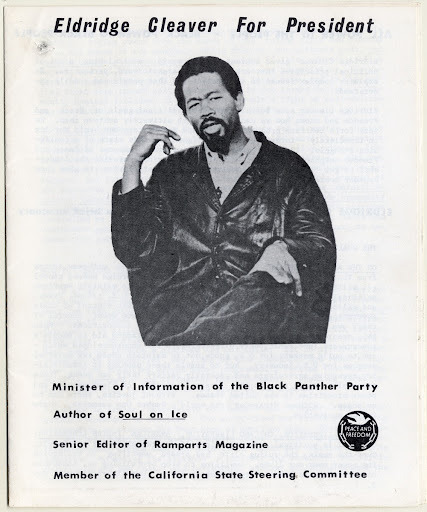
Ramparts was a hit-based magazine and needed a hot new story for every month. July 1965 was an interview with Hugh Hefner. It featured a foldout, but rather than a woman, they had Hefner himself (Keating turned his office into an imitation of Hefner’s after it hit newsstands). November was an attack on Reagan’s new autobiography penned by Mitford, anticipating his decision to run for governor. February 1966 was a special forces officer, Donald Duncan, who’d turned against the war and was attacking the CIA as its secret puppet master. But it was the April cover piece, readable here, that ultimately caused the CIA to assemble almost 400 separate dossiers on anybody who had anything to do with the magazine. A Michigan State University economics professor named Stanley Sheinbaum had been involved with a project to build the South Vietnamese government with secret support from the Agency. In secret, professors and students trained Vietnamese cops in fingerprinting, assisted Finance Ministry officials in accounting, and wrote the constitution from scratch for class credit. Concealed among them were CIA officers employed as MSU faculty engaged in torture and assassination, some of which Sheinbaum witnessed. The staff were sworn to secrecy except for Sheinbaum by clerical oversight, allowing him to tell his story. By April 18, the CIA had sprung into action. Director Raborn ordered an immediate file on the major staff members and a two month followup to identify every investor. This was technically illegal by dint of the 1947 law that created the CIA and banned it from spying on Americans, but the Agency had never actually adhered to that law anyways. It meant that the staff’s phones were under permanent wiretaps and virtually all of them would be audited yearly by the IRS. In July, the FBI followed suit, calling the magazine an agent of the Soviet Union. Both would engage in repressive action against Ramparts under the guise of COINTELPRO and MHCHAOS, illustrated by FBI man William Turner.
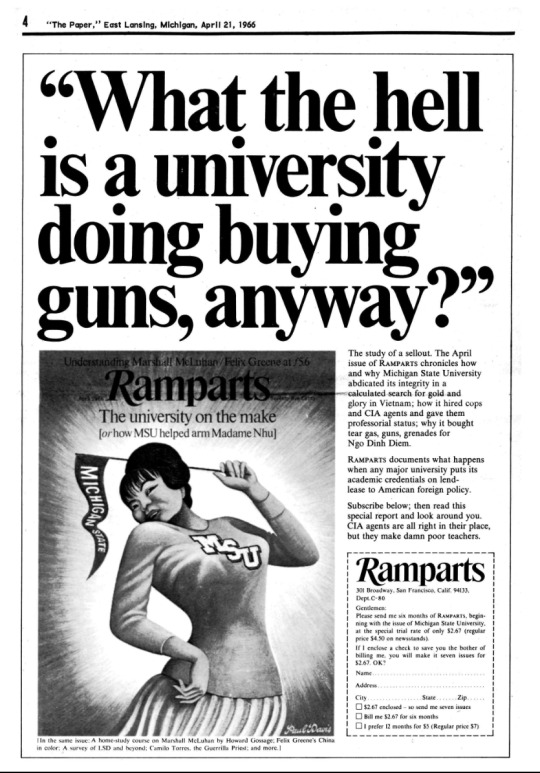
Turner was a 10 year Bureau veteran (Catholic, like most) who had become disillusioned after hearing Hoover call MLK “the most notorious liar in the country”. He was picked up by Ramparts, his first piece a critique of the FBI for a lack of convictions in attacks on civil rights campaigners. Turner became Ramparts’ muscle man, adding to stories through information gained from his connections with law enforcement across the country and helping to make lower level government investigations back off. Not long after he was hired, Turner was invited to the first of many parties at the offices. Also attending was Jessica Mitford and her husband, Robert Treuhaft, a lawyer who defended black southerners from the death penalty. Turner was introduced to them and immediately stated that he already knew them from somewhere, but they were sure he didn’t. It took him a few minutes to realize that he’d been listening to wiretaps of them from long before Ramparts even existed. Later, former Beirut Chief of Station Edgar Applewhite testified “I had all sorts of dirty tricks to hurt their circulation and financing. The people running Ramparts were vulnerable to blackmail. We had awful things in mind, some of which we carried off, though Ramparts fell of its own accord. We were not in the least inhibited by the fact that the CIA had no internal security role in the United States.“ His boss at the time, Desmond Fitzgerald, after being briefed on his recommendations said that he had blood on him. Louis Dube, who had experience dealing with drug-smuggling KMT guerillas in Burma, described what they’d done as “heady shit”.
Of course, this was a magazine run by drunken, drug-addled Irish Catholics with a penchant for spending work hours in strip bars and flying across the country holding lavish press conferences with old guard media men. It’s difficult to know where the sabotage ends and the incompetence begins. After Easter weekend 1967, Turner came into the office to find it ransacked with fire extinguisher goo and broken glass everywhere and a typewriter in the toilet. After months of searching, he finally found his culprit, a GOP official who’d committed the burglary for private right wing backers and then given photocopies to the CIA. He phoned up Hinckle, who immediately confessed to being the culprit. He’d trashed the office after a late night drinking session with Gene Marine, later the author of the first book on the Black Panthers. Not so, Turner said: the man he’d found had files from Ramparts’ storage. In fact, the burglar had done what he said, but nobody noticed the mess he’d made for two whole days in the general chaos of the workplace. It was a process repeated across many leftists groups in both macro and micro before and since.
47 notes
·
View notes
Text
So the great gatsby is public domain and between the musical and that one part in the book of bill I see a lot of americans say smth along the lines of "we're all familiar with this, we were all required to read it in high school"
And this is always funny to me cause like... the US curriculum isn't universal lol. Growing up in the Caribbean I've never even seen an irl copy of the great gatsby. I was too busy reading Juan Bosch and analyzing the historical context of Ruinas by Salomé Ureña to look into an american book about the american dream.
2 notes
·
View notes
Text

I avoid superhero movies, but I watched Blue Beetle.
by Maria Isabel Nieves Bosch
"I remember going to the movies when I was in high school and having fun with friends watching movies, like The Avengers (2012) and Thor (2011). My friend’s grandmother gave her a bag full of change for her to pay her ticket, and we all had to sit and count dimes, nickels, and pennies to reach $7, the cost for a movie in San Juan, Puerto Rico. After that, we tried to sneak in food and relish after succeeding in this thrilling and rebellious endeavor. Years later, I watched many superhero movies after high school, and my experience became less fun with each movie as I started to notice similar cocky characters, generic villains, and identical plotlines."
9 notes
·
View notes